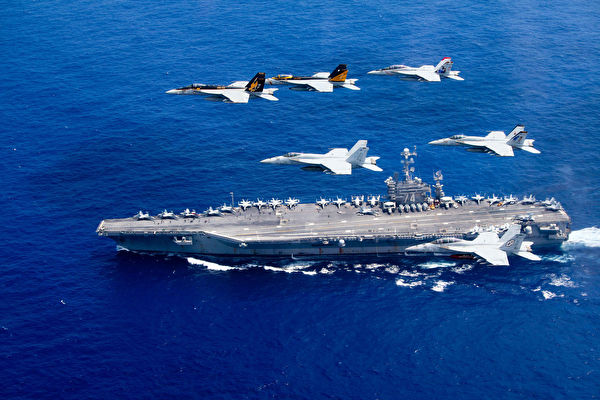The US Navy’s aircraft carrier USS Ronald Reagan has concluded its nearly nine-year forward deployment in the Pacific Ocean. On Thursday, May 16, it departed its homeport in Japan, to be replaced by another Nimitz-class aircraft carrier.
Commanding Officer of the USS Ronald Reagan, Colonel Daryle Cardone, expressed in a press release on Thursday, “For nearly nine years, thousands of sailors from the USS Ronald Reagan have been deployed throughout the region, living and working in Yokosuka, working alongside our allies and partners to uphold the rule of law and maintain a free and open Indo-Pacific region.”
This Nimitz-class nuclear-powered aircraft carrier was initially deployed to Japan in 2015.
The Ronald Reagan has served as the flagship of Carrier Strike Group 5 (CSG 5) and is part of the US Seventh Fleet, the largest forward-deployed fleet in the US Navy.
While the US is committed to maintaining a free and open Indo-Pacific region, China’s expansion in the area is escalating. Japan has been rapidly building up its military capabilities and significantly increasing joint naval operations with the US.
According to reports from the Associated Press and Business Insider, the aircraft carrier USS Ronald Reagan (CVN-76) will return to Bremerton, Washington later this year, and the USS George Washington will replace the Ronald Reagan in Japan.
The USS George Washington previously served as a forward-deployed aircraft carrier in Japan and is currently on a mission near South America.
Earlier on Thursday, after completing its final patrol mission, family and friends of the Ronald Reagan’s crew gathered to wave goodbye as the carrier departed Yokosuka Naval Base.
US Ambassador to Japan Rahm Emanuel spoke at the ceremony, ensuring a “seamless transition.”
Emanuel later told reporters, “The USS Ronald Reagan and its crew have ensured that millions of people in the Indo-Pacific region can live free from coercion, aggression, and oppression.”
According to the Seventh Fleet, carriers like the Ronald Reagan, combined with missile destroyers and cruisers, can form a carrier strike group consisting of up to 12 ships and 75 aircraft. These forces operate at a faster tempo than other navy ships and can reduce the time it takes to reach the region by an average of 17 days compared to forces stationed on the US mainland.
During its deployment, the Ronald Reagan has participated in dozens of multilateral exercises and visited over a dozen foreign ports, including a historic visit to Da Nang, Vietnam, last year.
Vice Admiral Greg Newkirk, commander of Carrier Strike Group 5, said, “Our relationship with Japan and the Japan Maritime Self-Defense Force has never been stronger.” He added, “Whether on the USS Ronald Reagan today or on the USS George Washington in the future, we will continue to strengthen this partnership at sea and onshore.”
The long-standing deployment of the Ronald Reagan in Japan demonstrates US support for its allies and the country’s strategic and military presence in the Pacific region.
Amid escalating sovereignty disputes in the South China Sea between China and countries like the Philippines, concerns are also growing over the East China Sea dispute between China and Japan concerning uninhabited islands.
Japanese and Chinese coast guard vessels have had multiple standoffs in the area.
Former Japanese Defense Minister Tomomi Inada recently took part in a controversial environmental survey near the disputed Senkaku Islands (called Diaoyu Islands by Beijing). On Thursday, she stated that cooperation with the US and like-minded countries is essential to uphold the international order.
“We feel a sense of urgency that the East China Sea not become another South China Sea,” she said.
China lodged a protest over the trip. Inada argued that experts should be allowed to land on Japanese territory for research and called for debates in parliament.
The presence of US aircraft carriers in the Pacific region serves as a deterrent to Chinese aggression as well as a counterbalance to Russia and North Korea’s actions.

